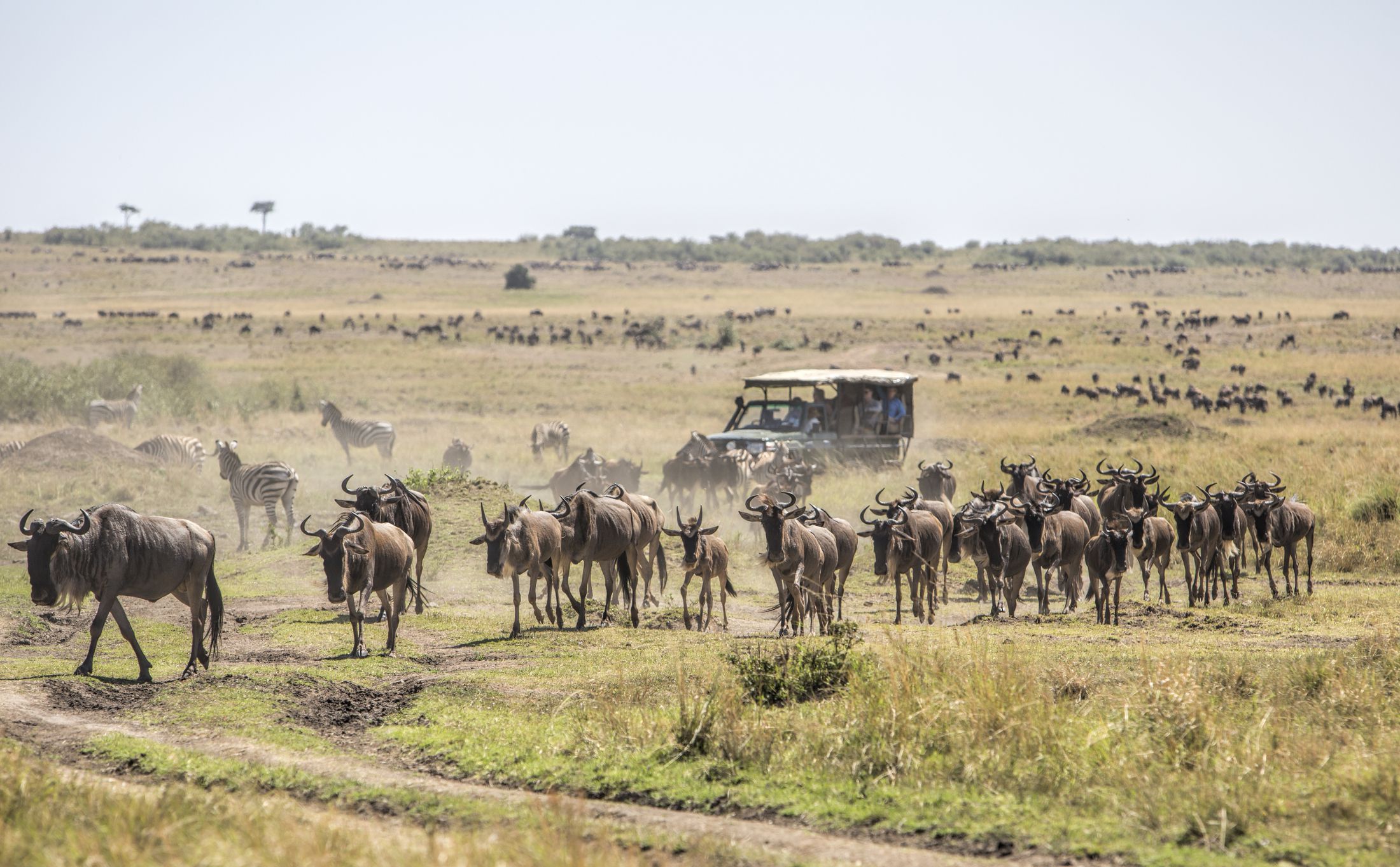Maasai Mara National Reserve Kenya: About Masai Mara Reserve
Maasai Mara National Reserve is a large National Game Reserve in Norok, in the southwest of Kenya, the Reserve is contiguous with Tanzania’s Serengeti National Park. Maasai Mara National Reserve was named in honor of the Maasai People, the ancestral people who inhabited the area and are believed to have migrated to the area from the Nile Basin.

Masai Mara National Reserve comprises of 1,510 square kilometers with the vast endless plains that encounters short sweet grasses, which is a source of ample feeding for the plentiful herbivores within the region.
The Masai Mara National Reserve is part of the large Mara – Serengeti ecosystem that spans on 25,000 square Kilometers, located in the north most part of the section. Maasai Mara National Reserve is bordered by the Serengeti National Park in the south, Siria/Oloololo escarpment to the west, Masai Mara pastoral ranches in the north, east and west.
The Reserve ecosystem encompasses areas known as the Masai Mara National Reserve, the Mara Triangle, and several Masai Conservancies, including Koiyaki, Lemek, Ol Chorro Oirowua, Mara North, Olkinyei, Siana, Maji Moto, Naikara, Ol Derkesi, Kerinkani, Oloirien, and Kimintet.
Maasai Mara National Reserve is one of the most famous and important wildlife conservation and wilderness areas in Africa, the reserve is world-renowned for its exceptional populations of lion, African leopard, cheetah and African bush elephant.
Masai Reserve is also a home to all the African Big Five animals that can be spotted all year round. The reserve is the only protected area in the country that habituates the indigenous black rhinoceros that are unaffected by translocations, and has one of the large population in Africa.
The Masai Mara Reserve is a home to variety of bird life and harbors over 470 bird species, many of which are migrants, with almost 60 species that are raptors. The most commonly spotted include: vultures, marabou storks, secretary birds, hornbills, crowned cranes, ostriches, long-crested eagles, African pygmy-falcons and the lilac-breasted roller, thus a good destination for birding in Kenya.
What is special about Masai Mara National Reserve?
Masai Mara National is a home to exceptional wildlife and one of the famous African safari destinations in Kenya. The Reserve hosts the great migration, the second largest terrestrial mammal migration on earth.

The great Migration in Kenya’s Masai Mara is an all year round event, where over 1.5 million wildebeest upon thousands of zebra and others grazers mark their long legendary journey of over 1,800 miles in a large round trek from the drier lands in Tanzania, heading towards the north to the Kenya’s Masai Mara in search for lush grass to graze.
When does the migration start? – The Great migration occurs all year round and since it is dictated by the spatial distribution of rainfall, at different month of the year migration can be seen at different site.
The exact dates when the Great Migration commences are not well known however, the first groups of grazer mammals start arriving to gather at northern edge of Serengeti National Park in Tanzania and the large numbers gather here for days without crossing the Mara River.
The migration starts in July and ends in the late September, however it is difficult to predict the real date when the movement starts. The best time to see the migration with animals in large numbers gathering and crossing the blood thirsty river with fast flowing water and infested with crocodiles, and many predators like lions, hyenas, and leopard in long wait to catch their prey is mid-July to late August.
